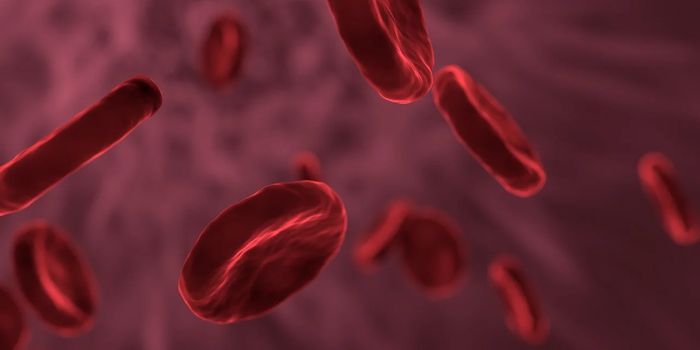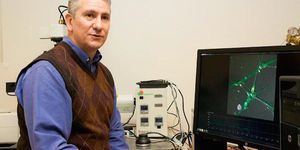Cancer cells rarely spread on their own, preferring to travel in groups from their original tumor site, a new study with mice shows.
Collaboration seems to increase their collective chance of surviving to establish metastatic tumors elsewhere in the body.
“You can think of metastasis as The Amazing Race,” says lead researcher Andrew Ewald. “The cells encounter many different challenges as they attempt to grow and spread, and some cells are better at different events than others, so traveling in a group makes sense.”
The scientists say they also found evidence that traveling cells differ from those multiplying within a primary tumor. That difference may make the cells naturally resistant to current forms of chemotherapy.
“We found that cancer cells do two things to increase their chances of forming a new metastasis,” says Ewald, associate professor of cell biology at Johns Hopkins School of Medicine. “They turn on a molecular program that helps them travel through a diverse set of environments within the body, and they travel in groups.”
Conventional wisdom has held that cancer cells leave tumors one by one to colonize other areas of the body, but clinical and genetic evidence has mounted over a decade to suggest otherwise, Ewald says.
He set out to settle the question using mice with a form of mammary gland cancer that consistently metastasizes to the lungs.
For the study, published in the
Proceedings of the National Academy of Sciences, researchers removed tumors from mice whose cells were genetically engineered to glow either red or green under special lights. They then implanted those red and green tumors into the mammary glands of mice whose cells did not glow and looked for metastases in the lungs.
Group travel
If single cells colonized new metastases, the new tumors would only glow one color or the other. Instead, the researchers found many multicolored clumps and, using computer modeling, discovered that even most of the single-colored clumps had also arisen from multiple cells that happened to glow the same color. In all, they estimate that fewer than 3 percent of the metastases started from a single cell.
To catch sight of the traveling cells before they reached the lungs, the researchers looked in tissue just outside the primary tumors, in the blood vessels surrounding the tumors and in circulating blood. At each step, they found multicolored clusters of cells.
Next, to figure out if group travel gives cells an advantage, the team compared the ability of single cells and clusters to form colonies. They began with cells in dishes filled with a gelatin-like substance that mimics tissue surrounding mammary tumors. They found that clusters were more than 15 times better at forming colonies than single tumor cells. In mice, the clusters were more than 100 times better at creating large metastases.
The team also looked at whether traveling cells showed any particular molecular hallmarks. Previous work in Ewald’s laboratory showed that cells are usually “led” out of tumors by cells decorated with the protein K14, so they started there.
Indeed, the team found that K14 levels are quite low in primary tumors and large metastases but high in small, traveling clusters of cells. Experiments in petri dishes showed that the cells switched between two molecular programs—one for proliferation and one for metastasis—and that the level of K14 revealed which program was “on” in any given cell.
“Because most chemotherapeutic drugs target proliferating cells, metastasizing cells won’t be killed by them, leaving patients vulnerable to new tumors,” Ewald says. “Our discoveries add to knowledge that could help overcome that vulnerability.”
The US Defense Department, the Burroughs Wellcome Fund, the American Cancer Society, the National Cancer Institute, the Mary Kay Ash Foundation, the Cindy Rosencrans Fund for Triple Negative Breast Cancer Research, the Metastatic Breast Cancer Network, The Pink Agenda, and the Breast Cancer Research Foundation funded the work.
Source:
Johns Hopkins University
This article was originally published on
futurity.org.


















































